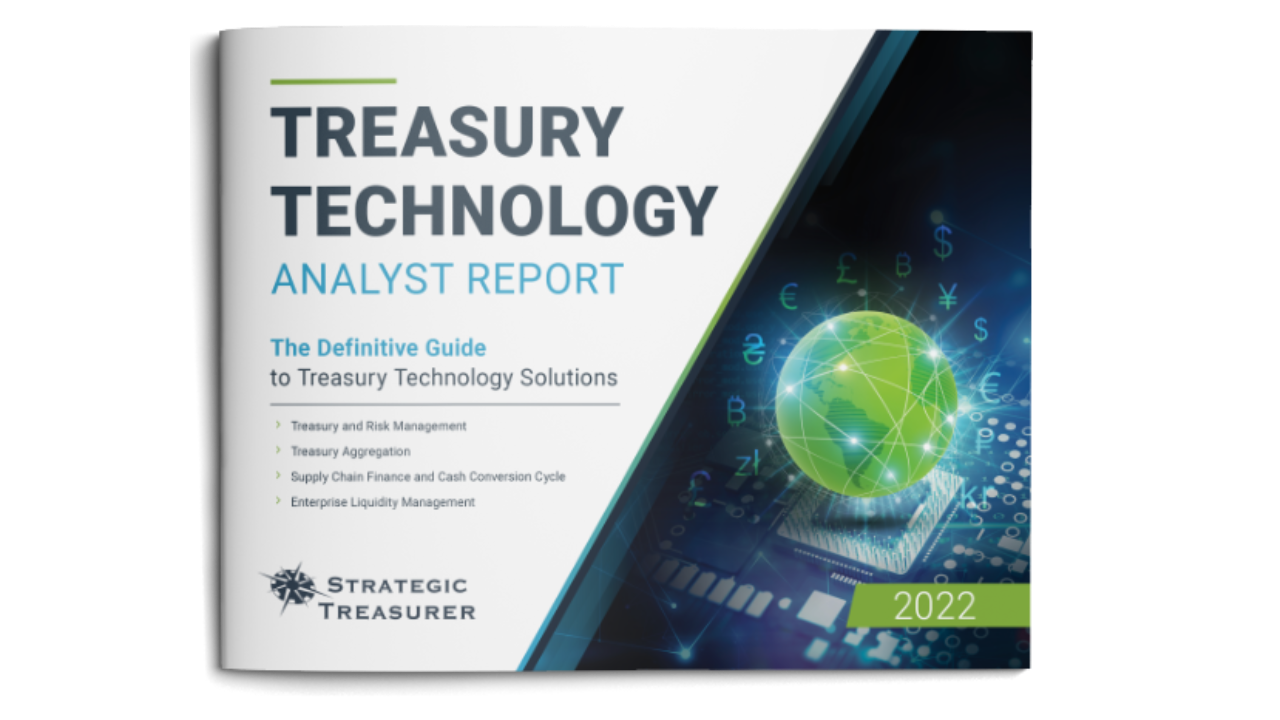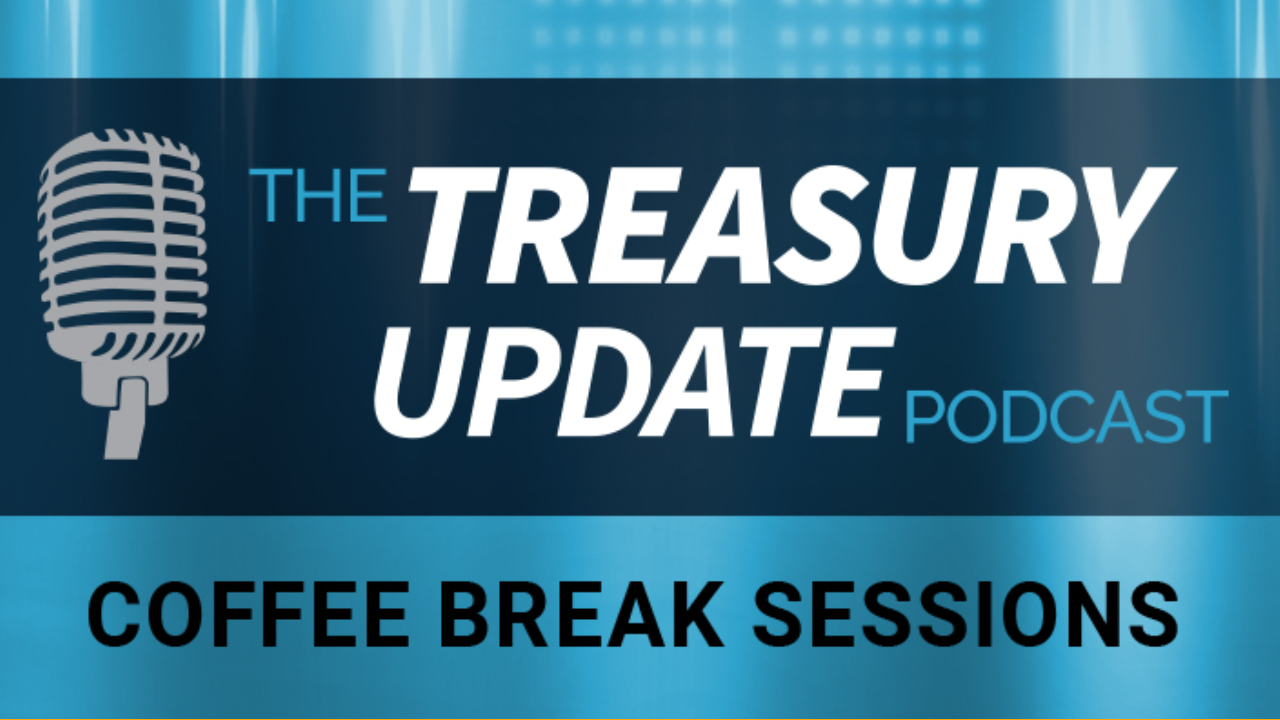
Session 79
Coffee Break Session:
What Is Preferred Stock?
Host Jason Campbell catches up with Strategic Treasurer’s Senior Advisor Paul Galloway to chat about preferred stock. They discuss why a company would want to issue preferred stock, how it’s different from common stock, and how it’s treated from a credit perspective.
Host:
Jason Campbell, Strategic Treasurer


Speaker:
Paul Galloway, Strategic Treasurer


Episode Transcription - (Coffee Break Session Series) - Episode 79 - What Is Preferred Stock?
Jason Campbell 00:03
Welcome to the Treasury Update Podcast, Coffee Break Sessions presented by Strategic Treasurer covering foundational topics and core treasury issues in about the same amount of time it takes you to drink your cup of coffee. I’ll be your host Jason Campbell, business development leader at Strategic Treasurer. Chatting with me today is Paul Galloway, Senior Advisor at Strategic Treasurer, Paul, always a pleasure. Welcome back to the show.
Paul Galloway 00:26
Thanks for having me back. Again, Jason.
Jason Campbell 00:28
Our last episode was around common stock. And it was kind of the continuance of what we started at the end of 2022, around stocks in general. And I kind of want to end this segment on this last piece here detection around preferred stock. So let’s go right into it. Paul, can you kind of walk me and the audience through around what exactly is preferred stock?
Paul Galloway 00:47
Preferred stock is a is a funding vehicle or instrument that behaves like something that has characteristics of common stock and debt. Think of it this way, it’s like a bond issue shares, like stock, but there’s a cash component to it. That is, typically it’s fixed, say, let’s just throw number, say 5%, you issue the shares that have a face value of a lot of times you’ll see him one shares equal to $25,000 par, meaning you hold one share or one unit, it’s worth 25,000 For one unit, you get 100 units, $2.5 million, so on and so on, right. But for each one of these units, they will pay a dividend on there. So like common stock pays a dividend, except with common stock, the board makes decisions around approving what that common stock yield or payment should be right. So that dividend, it gets announced, hey, for the next 12 months, we’re gonna pay X percent dividend is typically cents X cents for every share. So let’s say 50 cents a share is the dividend on common stock. In the case of a preferred instrument, it is a percent on the dollar value. So let’s say it’s 5%. So if you own a million par of those preferred stock, you will get paid 5% on that million dollars.
Jason Campbell 02:21
Interesting any say when the board already sets, you know, kind of what that dividend payouts going to look like versus what’s in that preferred piece of it. So there’s definitely some intriguing interest I mentioned in both pieces from a common and preferred. But why would a company want to issue this preferred stock?
Paul Galloway 02:37
Yeah, there’s there’s a couple, there’s a couple of reasons why one, they don’t want to do a follow on equity offering. And so they don’t want to issue equity. But the in the same token, they may not want to issue debt as well, because the makeup of their portfolio, the way instruments are treated and looking at their overall capital, it makes more sense to divert to diversify it through a preferred stock offering where they can control the parameters a little bit better, and maybe get more favorable terms in terms of the duration of the preferred stock, sometimes preferred stocks can be perpetual. And so you borrow $100 million. And you have preferred stock that’s really long dated, or perpetual in nature, and you’re just clipping a coupon every year, or every quarter, or semiannual payment that you’re making to the investor that holds a preferred stock. And investors like that, because I always know, hey, I’m gonna get my 5% at these times throughout the year. And so it can be attractive for both the issuer and the investor.
Jason Campbell 03:47
So I know that we talked about key difference was between how the board sets the dividend payout to the valuation of the of the value of the stock. But what other things are what other differentials between those two?
Paul Galloway 04:00
That’s a great question. We did talk about some of the differences already around the dividend is definitely different common stock, it’s paid out. And since it’s approved by the Board, preferred dividend as percent of par value is set in the agreement at issuance of the preferred stock. And so the parameters are set in stone, they don’t need to be approved, again, by the board that may have to be an approval to issue the preferred stock by the board, but there doesn’t have to be approval on the dividend. The other thing is, is that the cost of capital is different. So cost of capital for common stock is, is the highest rate that you pay when it comes to preferred being a kind of a combination of common debt. It turns out that preferred ends up being a lot less costly than common stock.
Jason Campbell 04:53
So with preferred stock, how is it treated from a credit perspective?
Paul Galloway 04:57
When you think about how rating agencies Look at that ratings. And they look at the overall balance sheet, they hit you otherwise they hit, they’ll treat, let’s say, your regulated company like an insurance company, they’ll treat it a certain way based on its component, not it’s placed on the balance sheet and the mix in totality. So what it will be is common stock will get hit with a certain percentage, and then preferred stock will get hit with a certain percentage and debt will get hit with a certain percentage. And you think about it, Terry, the highest hit, just seen hit or highest percent of the component makeup of the wrist, let’s say RBC ratio. In this case, for regulated entities, that RBC ratio takes a bigger hit for common stock versus preferred versus debt. So preferred kind of in between, because it’s kind of a mixture of the two. If you have a diversified balance sheet, they end up giving you credit for that, even though debt is a lower hit towards your risk based capital. What I mean by that is, is that with the equity, it can raise your RBC ratio, how much capital you’re, you’re required to hold. But because you have a more diversified portfolio, you can diversify, diversify away, a chunk of in some instances, all of the RBC ratio lift as you hold common stock. And so same thing from, let’s say, a non regulated entity, it’s it’s similar in nature, what the rating agencies are going to do is they’re going to look at your overall balance sheet. And they’re going to say, Oh, you have components of common stock, preferred stock, senior debt, the revolver is contingent liquidity, these other factors. And all of these get a certain allocation between debt and equity, what they do is they look at that debt to equity ratio with a preferred stock that helps you with the debt to equity ratio when you issue because it is, you know, kind of hybrid issuance, it has a common stock components, it has a debt component, so it doesn’t hurt you as much as common stock would in terms of your equity percentage allocation, necessarily, or your debt. percentage allocation is kind of a mixture of the both, so it smoothes that out. And so if you’re required to have a certain percent of equity, let’s say it’s 25% 75% debt, you can’t change that mix. I’m just making up numbers here. You don’t want to grow the debt piece, because you grow the debt piece, you might get a ratings downgrade, and you want to somehow maybe you want to raise the equity side because you are really close to that threshold trip in it. Well, preferred stock and can I help balance that out and allow you to raise capital without doing a follow on equity offering,
Jason Campbell 08:05
Paul, as always, you know, great information, especially around preferred stock really appreciate the topic for today. And, you know, really given myself a good education, hopefully some listeners out there as well. So thank you again, Paul, for joining me today. For our listeners. Please be sure to tune in every first and third Thursday of the month for a new episode of the Coffee Break Session. As usual. If you have any questions, comments or feedback, please send us a note at podcast@StrategicTreasurer.com. Until next time, take care.
Announcer 08:36
This podcast is provided for informational purposes only, and statements made by Strategic Treasurer LLC on this podcast are not intended as legal, business, consulting, or tax advice. For more information, visit and bookmark StrategicTreasurer.com.
- Treasury & Risk Management Systems
- Treasury Aggregators
- Supply Chain Finance & Cash Conversion Cycle
- Liquidity Enterprise Management




